Plants of the Gila Wilderness
Presented in Association with the
Western New Mexico University Department
of Natural Sciences
Sphagnum capillifolium (Ehrhart) Hedwig
Family: Sphagnaceae
Status: Native
Synonyms:
Sphagnum palustre var. capillifolium Ehrhart
Sphagnum capillaceum (Weiss) Schrank
Sphagnum capillifolium var. viride Jennings
Sphagnum margaritae H. A. Crum
Sphagnum acutifolium Schrader
Sphagnum nemoreum Scopoli
The genus Sphagnum is notable in many respects, unlike other mosses in both macroscopic and microscopic characters. There
is a capitulum, or apical head of branches on the top of a stem with fascicles of branches underneath. Both the stem and branch
leaves have characters useful for keying out the plants. There are no rhizoids, and almost no seta but a pseudopodium of
gametophytic tissue that raises up the sporophyte which opens by explosive force. The cells of the leaves are of two alternating
types-- smaller more linear chlorophyllous cells and much larger water storing hyaline cells that are usually reinforced by spiral fibrils.
Sphagnum capillifolium is found in neat, compact colonies of tightly packed plants varying from completely green, to red tinged, to nearly completely red. The upper stem is usually green, though it is darker below. The capitulum is rather small and hemispheric in shape. The stem leaves are widest near the center and point upwards with parallel sides near the base that start to converge to the apex near midleaf. The apex can be hooded, but may be more plane in some leaves. The stem leaf margins are entire, except at the very apex which may be slightly erose. The cells of the stem leaves are S-shaped, and have no fibrils in the portion of the leaf with parallel sides, but are fibrillose in the portion of the leaf in which the sides are converging to the apex. The fascicles generally have two spreading and two drooping branches. The branch leaves are widest near the center and are fibrillose throughout.
Sphagnum capillifolium has been found in a high altitude fen (10,300 feet elevation) in northern New Mexico. It is easily distinguished from S. fimbriatum which has larger, much more lax and less compact yellowish green stems. The stem leaves of S. fimbriatum are fan shaped and fimbriate at the apex.
John Brinda found this plant in New Mexico and we are grateful for his help relocating it!
Please click on an image for a larger file.
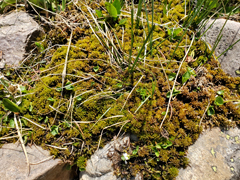
Sphagnum capillifolium, photo Russ Kleinman, Karen Blisard, Stacey Anderson & Bayard "Mo" Ewing, Rio Arriba Cty., Carson National Forest, CD trail about 2 miles north of Canjilon Lakes, June 16, 2021
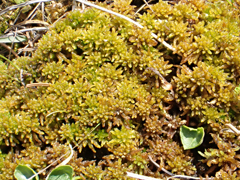
Sphagnum capillifolium, closeup, photo Russ Kleinman, Karen Blisard, Stacey Anderson & Bayard "Mo" Ewing, Rio Arriba Cty., Carson National Forest, CD trail about 2 miles north of Canjilon Lakes, June 16, 2021
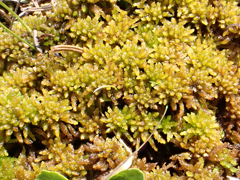
Sphagnum capillifolium, closeup, photo Russ Kleinman, Karen Blisard, Stacey Anderson & Bayard "Mo" Ewing, Rio Arriba Cty., Carson National Forest, CD trail about 2 miles north of Canjilon Lakes, June 16, 2021
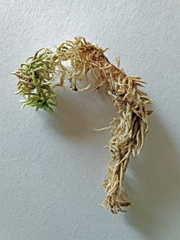
Sphagnum capillifolium, single stem, photo Russ Kleinman, Karen Blisard, Stacey Anderson & Bayard "Mo" Ewing, Rio Arriba Cty., Carson National Forest, CD trail about 2 miles north of Canjilon Lakes, June 16, 2021
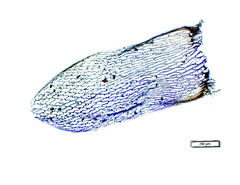
Sphagnum capillifolium, photomicrograph of leaf, photo Russ Kleinman, Karen Blisard, Stacey Anderson & Bayard "Mo" Ewing, Rio Arriba Cty., Carson National Forest, CD trail about 2 miles north of Canjilon Lakes, June 16, 2021
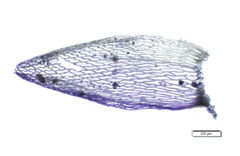
Sphagnum capillifolium, photomicrograph of leaf, photo Russ Kleinman, Karen Blisard, Stacey Anderson & Bayard "Mo" Ewing, Rio Arriba Cty., Carson National Forest, CD trail about 2 miles north of Canjilon Lakes, June 16, 2021
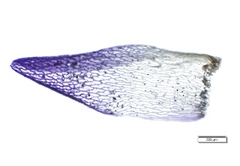
Sphagnum capillifolium, photomicrograph of leaf, photo Russ Kleinman, Karen Blisard, Stacey Anderson & Bayard "Mo" Ewing, Rio Arriba Cty., Carson National Forest, CD trail about 2 miles north of Canjilon Lakes, June 16, 2021
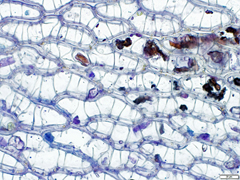
Sphagnum capillifolium, photomicrograph of fibrillose cells at leaf apex, photo Russ Kleinman, Karen Blisard, Stacey Anderson & Bayard "Mo" Ewing, Rio Arriba Cty., Carson National Forest, CD trail about 2 miles north of Canjilon Lakes, June 16, 2021
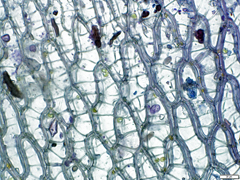
Sphagnum capillifolium, photomicrograph of fibrillose cells at leaf apex, photo Russ Kleinman, Karen Blisard, Stacey Anderson & Bayard "Mo" Ewing, Rio Arriba Cty., Carson National Forest, CD trail about 2 miles north of Canjilon Lakes, June 16, 2021
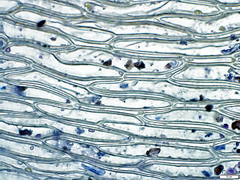
Sphagnum capillifolium, photomicrograph of cells without fibrils (efibrillose) at leaf base, photo Russ Kleinman, Karen Blisard, Stacey Anderson & Bayard "Mo" Ewing, Rio Arriba Cty., Carson National Forest, CD trail about 2 miles north of Canjilon Lakes, June 16, 2021
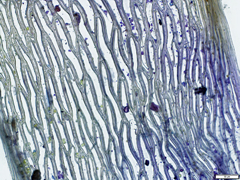
Sphagnum capillifolium, photomicrograph of cells without fibrils (efibrillose) at leaf base, photo Russ Kleinman, Karen Blisard, Stacey Anderson & Bayard "Mo" Ewing, Rio Arriba Cty., Carson National Forest, CD trail about 2 miles north of Canjilon Lakes, June 16, 2021
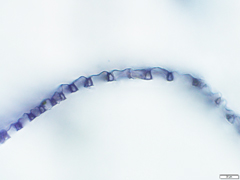
Sphagnum capillifolium, photomicrograph of cross section of stem leaf, photo Russ Kleinman, Karen Blisard, Stacey Anderson & Bayard "Mo" Ewing, Rio Arriba Cty., Carson National Forest, CD trail about 2 miles north of Canjilon Lakes, June 16, 2021
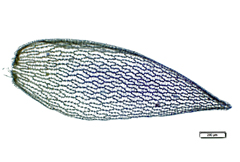
Sphagnum capillifolium, photomicrograph of branch leaf, photo Russ Kleinman, Karen Blisard, Stacey Anderson & Bayard "Mo" Ewing, Rio Arriba Cty., Carson National Forest, CD trail about 2 miles north of Canjilon Lakes, June 16, 2021
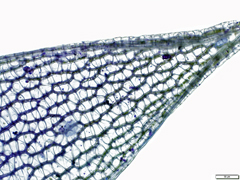
Sphagnum capillifolium, photomicrograph of branch leaf apex, photo Russ Kleinman, Karen Blisard, Stacey Anderson & Bayard "Mo" Ewing, Rio Arriba Cty., Carson National Forest, CD trail about 2 miles north of Canjilon Lakes, June 16, 2021
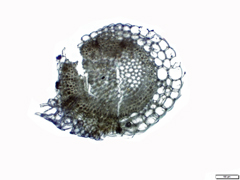
Sphagnum capillifolium, photomicrograph of cross section of stem, photo Russ Kleinman, Karen Blisard, Stacey Anderson & Bayard "Mo" Ewing, Rio Arriba Cty., Carson National Forest, CD trail about 2 miles north of Canjilon Lakes, June 16, 2021
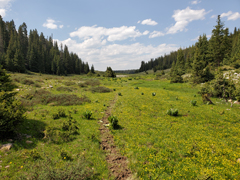
Sphagnum capillifolium, habitat-- fen at 10,300 feet elevation, photo Russ Kleinman, Karen Blisard, Stacey Anderson & Bayard "Mo" Ewing, Rio Arriba Cty., Carson National Forest, CD trail about 2 miles north of Canjilon Lakes, June 16, 2021
Back to the Index















